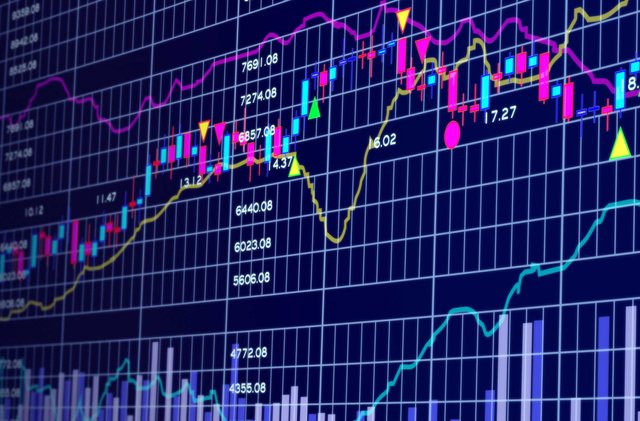Trading from scratch to the first profit 'Part 1'
Trading from scratch to the first profit

Trading is a business, not a game. And to take this direction seriously. As in any business, there are risks. And because of the dynamic nature of the market, the risks are higher than in the ordinary business.
Therefore, anyone who wants to engage in trading should follow a sequence of steps that will help him avoid most mistakes, not lose a deposit and not be in a difficult situation.
All work is built on two basic principles - training and safety. I once said that without knowledge there is nothing to do at the stock exchange. If the market presents for you an incomprehensible chart with yellow and red candles and you do not know anything else, then you will most likely just go into minus after the first deals.
The second principle is security. Despite the fact that many coins have secure transactions and anonymity, it is still impossible to be fully protected. Unfortunately, many people, because of their carelessness, are themselves targeted for hackers and scammers who want to get easy money.
Step # 1. Choose the exchange and create a secure wallet.
Today's most liquid and secure exchange is www.huobi.pro and www.binance.com
Choose the largest exchanges, which host all the main virtual assets. I personally recommend Bitfinex. Do not trade on small sites and do not conduct any transactions there, because you have no guarantees.

When registering on different exchanges, you should use various data - mail and passwords. As for the second point, it should be taken into account that a simple password can be easily cracked by hackers. That's why you should think about making it quite complex (consisting of at least 16 characters of letters of different register and numbers). Data should be recorded either on paper or on electronic devices.
One of the good types of purses are cold wallets, which allow you to store virtual assets on a certain carrier. The main advantage - a wallet can work without access to the Internet, and therefore more protected. One of such carriers can be a portable electronic device that connects to a computer using USB.
The second point - always use double authentication from Google (2FA Google).
Step number 2. Training.
Before you start directly trading - study this niche. You do not need to delve into the most complex indicators, credit trading and detailed technical analysis of charts.

The main points that you need to know:
a) Movement of the graph. The movement of the graph directly consists of pulses and corrections. Impulse is a dynamic movement up or down with a breakdown of the previous high or low. Correction - less dynamic movement within the impulse movement. There is still lateral movement, when the chart moves within a small range and the forces of bulls and bears are approximately equal.
b) Candles. A candle is the position of players in the market for a certain time. The red candle means closing the position below the opening, the yellow candle - closing higher (price increase). The candle itself consists of the main part and the shadow. Shadow means the price movement before the close of trading. Each shadow on the older chart consists of the structure of the motions on the younger graphs (smaller time intervals).
c) Levels and indicators. Levels are markers where the graph reverses direction. If you see that the chart several times "bounced" from a certain mark or slightly punched it, then this level will be strong. The upper levels, from which the price changed direction - the resistance levels, the lower levels - the support levels. Indicators are tools that demonstrate the volumes and directions of the movement of graphs. There is an indicator RSI, showing trading volumes; MACD, showing the average price of the market in real time and CCI, which shows the movement of the market and the situation when the market can change its direction. These are the main indicators for the beginner (there are a few hundred of them all).
d) Psychology of trading. Psychology is based on the main principle - peace and competent analysis of the situation on the market. The main thing that you should avoid is panic and excessive euphoria. This is a very important point, which, in principle, you need to know not only the trader, but also the ordinary person in everyday life.
Step # 3. Risk management and opening of trades.

Before you open the auction, you must remember the main rule of risk management - to invest exclusively free funds that you are not afraid to lose. If you take money on credit, sell something, or reduce the quality of life - then trading is not for you. Also, you have to understand to which part of the deposit you will open those or other transactions, when and how you need to place limit orders and form your portfolio.
But in order to do it all - you have to set certain goals for profit and correctly calculate your finances. Prepare that at the very beginning, most likely, you will have more unprofitable trades (since everything is comprehended in practice).
Next - open a demo account and analyze the TradingView platform. You must apply candlestick analysis and indicators in order to be able to predict the movement of the chart and not make a major mistake for newcomers - to buy at high levels and to panic in the fall.
It is always desirable to have a diary of a trader in front of you, in which you will write down your judgments about the market and plan your previous transactions.
Thus, the path of a novice trader is not so complicated. The main thing is that you should take it step by step, do not run ahead and try to prove to the market that you are "smart" and know where it will go....
Hi your article is very good.
i want to translate it and share your idea with people around me.
am from China, Beijing.
hope can get your early response discuss about this.
Thank you so much for your sharing.